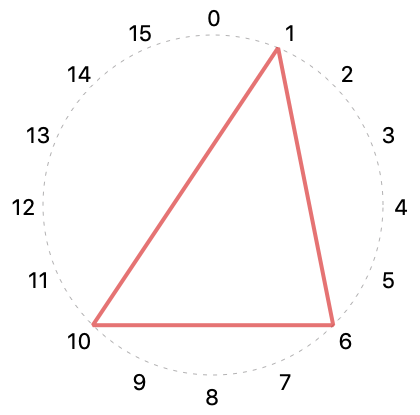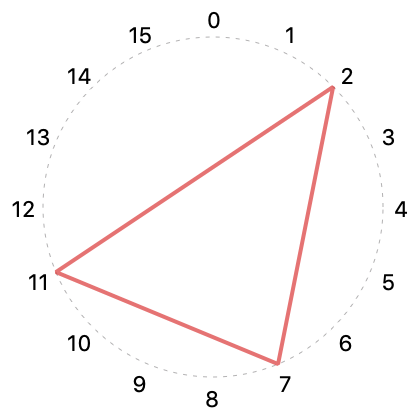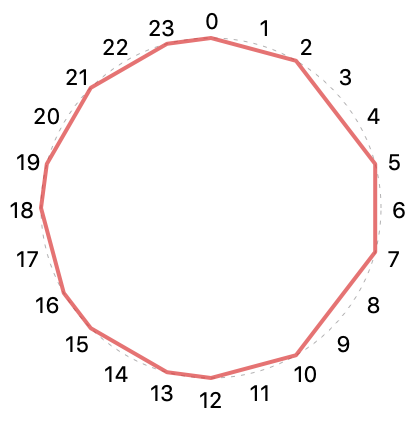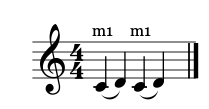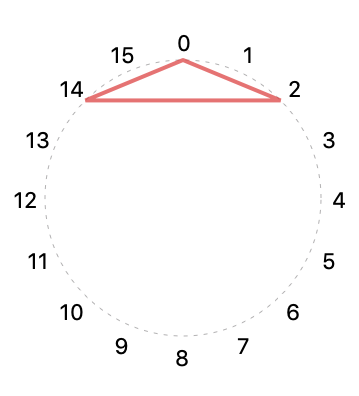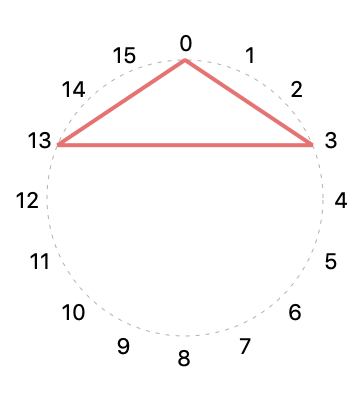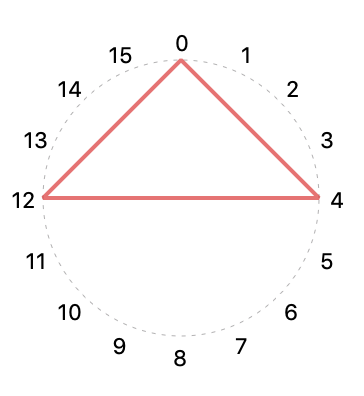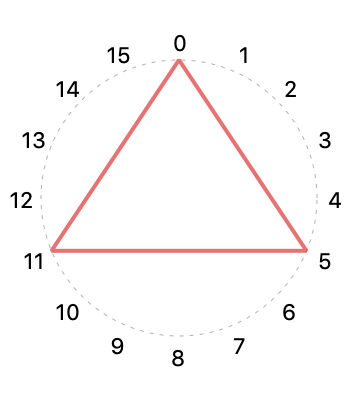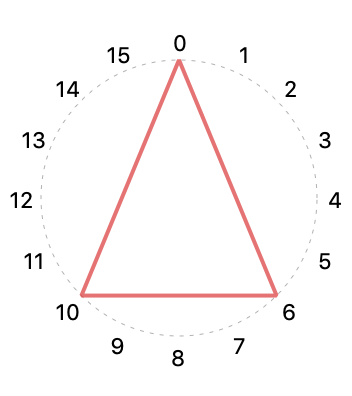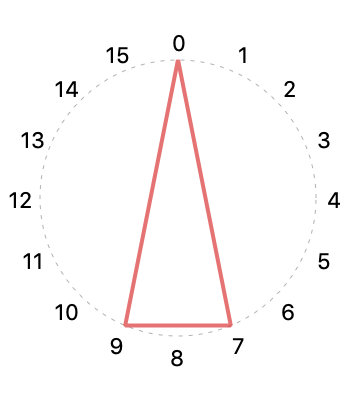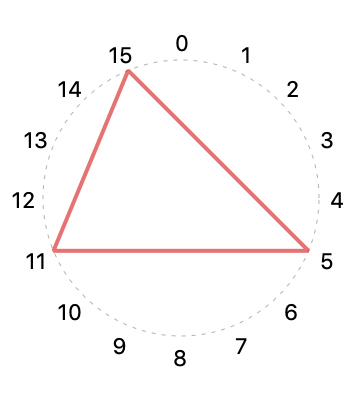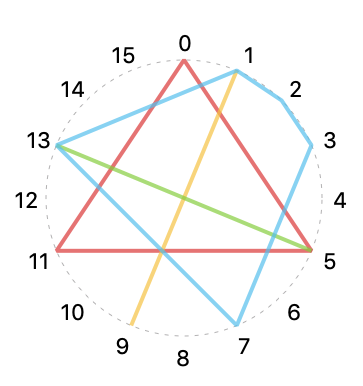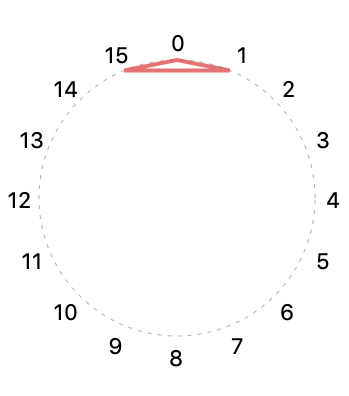-
Posts
2,894 -
Joined
-
Last visited
Content Type
Forums
Events
Store
Video Gallery
Everything posted by opmo
-
No bug, there is a way to get the result you are looking for. If your list are lists only and you expect to get chords only then place the lists in additional list: (integer-to-pitch '(((-2 -1) (0 2) (1 2)))) => ((bb3b3 c4d4 cs4d4))
-
Will have a look if may time with coding permits, sounds very good.
-
How to save last score (or last snippet) to midi-file in a given location: (compile-score *last-score* :output :midi :file "path/filename")
-
-
– Update: SNIPPET – length snippet will display without a line staff. To display the length SNIPPET line staff, set the *SNIPPET-LENGTH-LINE* to T. (defparameter *snippet-length-line* T "Enable or disable the length snippet line staff display.") The default is: NIL – Fixes: Bug fix found in length conversion to length-symbols function. Missing OM Developer documents (English version). Best wishes, Janusz
-
The change will be part of the next update release.
-
It is not a bug. I can revert the change, I too prefer length display without the center line - 'Behind Bars' by Elaine Gould.
-
I agree, stemlets are better representation of the time signature. I will ask James if we could add this to our system.
-
– Function name changes: LENGTH-DIVIDE2 to LENGTH-SUBDIVISION LENGTH-DIVIDE3 to LENGTH-SYNCOPATE – Function update: LENGTH-DIVIDE – changes to arguments. LENGTH-SUBDIVISION – changes to arguments. LENGTH-SYNCOPATE – changes to arguments. POLYGON-RHYTHM – enable fixed sides polygon. – Note: If you used any of the functions: LENGTH-DIVIDE, LENGTH-DIVIDE2 or LENGTH-DIVIDE3 in your scores, please check new documents in order to make the necessary correction. – New: Enable or disable the DO-VERBOSE macro. (defparameter *do-verbose* nil "Enable or disable traces printed by do-verbose.") length-divide This function is able to divide number of lengths to a given division value. The :set and :ignore option increases the control for the desired result. When processing the omn-form sequence an optional third value allows you to fill intervalic steps (a root transposition) to new length values derived from the divisions. (setf rhy '(1/4 1/4 1/4 1/4)) (length-divide '(2 2) rhy) => (1/8 1/8 1/4 1/4 1/8 1/8) (length-divide '(2 4) rhy) => (1/4 1/16 1/16 1/16 1/16 1/16 1/16 1/16 1/16 1/4) Example: (length-divide '(1 2) '(1/4 -1/8 1/16 1/16 -1/32 -3/32 1/8 1/1) :seed 34) => (1/4 -1/8 1/16 1/32 1/32 -1/32 -3/32 1/8 1) In the example above only 1 length is divided by 2 - that is the 1/16. In the example below 4 lengths are divided by 2. (length-divide '(4 2) '(1/4 -1/8 1/16 1/16 -1/32 -3/32 1/8 1/1) :seed 34) => (1/8 1/8 -1/8 1/16 1/32 1/32 -1/32 -3/32 1/16 1/16 1/2 1/2) (length-divide '(1 2) '(1/4 -1/8 1/16 1/16 -1/32 -3/32 1/8 1/1) :set 'min :seed 34) => (1/4 -1/8 1/32 1/32 1/16 -1/32 -3/32 1/8 1) (length-divide '(1 4) '(1/4 -1/8 1/16 1/16 -1/32 -3/32 1/8 1/1) :set 1/8 :seed 34) => (1/4 -1/8 1/16 1/16 -1/32 -3/32 1/32 1/32 1/32 1/32 1) (length-divide '((2 3) (1 2)) '((1/4 -1/8 1/16 1/16) (1/32 -3/32 1/8 1/1)) :ignore 'max :seed 45) => ((1/4 -1/8 1/48 1/48 1/48 1/48 1/48 1/48) (1/64 1/64 -3/32 1/8 1)) (length-divide '((2 4) (1 2)) '((q -e s s) (s -e. e w)) :set 'max :ignore 1 :seed 65) => ((1/16 1/16 1/16 1/16 -1/8 1/16 1/64 1/64 1/64 1/64) (1/16 -3/16 1/16 1/16 1)) OMN: (setf mat1 '(q c4 d4 e4 f4 g4 a4 b4)) (length-divide '(3 4) mat1 :seed 45) => (s d4 bb3 cs4 b3 cs4 eb4 c4 e4 q s g4 e4 eb4 fs4 q g4 a4 b4) Symbol 'r will apply repeat function: (length-divide '(3 4 r) mat1 :seed 45) => (s c4 c4 c4 c4 d4 d4 d4 d4 q e4 s f4 f4 f4 f4 q g4 a4 b4) Here we use a set of interval values at the end of the division list: (length-divide '(3 4 (13 0 1 13)) mat1 :seed 45) => (s cs5 c4 cs4 cs5 eb5 d4 eb4 eb5 q e4 s fs5 f4 fs4 fs5 q g4 a4 b4) (setf mat2 '((e c4 p e4 mp g4 he c5 p) (q c4 f c4 cs4 mp - d5 p d5) (q cs5 mf = - - cs5 p =))) (length-divide '((1 4) (2 4) (2 5)) mat2 :seed 34) => ((e c4 p e4 mp t a4 f4 gs4 fs4 he c5 p) (q c4 f s b3 cs4 bb3 d4 q cs4 mp - d5 p s c5 e5 cs5 eb5) (q cs5 mf cs5 - - 5q eb5 p b4 c5 d5 eb5 c5 eb5 b4 d5 c5)) In the example below we assign three series of division values to variables s1, s2 and s3: (setf s1 '(3 4 (6 12 18 24)) s2 '(3 4 ((13 1 13 0) (13 0 7 1) r)) s3 '(2 5 ((13 0 13 0 13) ?)) ) (length-divide (list s1 s2 s3) mat2 :seed 34) => ((e c4 p t bb4 mp e5 bb5 e6 cs5 g5 cs6 g6 et fs5 p c6 fs6 c7) (q c4 f s cs5 cs4 cs5 c4 q cs4 mp - s eb6 p d5 a5 eb5 d5 d5 d5 d5) (5q d6 mf cs5 d6 cs5 d6 q cs5 - - cs5 p 5q d5 eb5 c5 b4 d5)) length-subdivision This function is able to divide a list of lengths into a number of subdivisions derived from a given length segment value. The :type and :position option increases the control for the desired result. When processing the omn-form sequence an optional third value allows you to fill intervalic steps (a root transposition) to new length values derived from the divisions. This function is a more sophisticated version of LENGTH-DIVIDE. It produces fascinating variants on the simplest of note-lengths, as can be seen below. (setf rhy '(1/4 1/4 1/4 1/4)) (length-subdivision '(2 1/8) rhy) => (1/8 1/8 1/8 1/8 1/8 1/8 1/8 1/8) position 's (start): (length-subdivision '(2 1/16) rhy :position 's) => (1/16 1/16 1/8 1/16 1/16 1/8 1/16 1/16 1/8 1/16 1/16 1/8) position 'e (end): (length-subdivision '(2 1/16) rhy :position 'e) => (1/8 1/16 1/16 1/8 1/16 1/16 1/8 1/16 1/16 1/8 1/16 1/16) type 'r (rest), position 'e (end): (length-subdivision '(2 1/16) rhy :type 'r :position 'e) => (-1/8 1/16 1/16 -1/8 1/16 1/16 -1/8 1/16 1/16 -1/8 1/16 1/16) type 'r (rest), position 's (end): (length-subdivision '(2 s) rhy :type 'r :position 's) => (1/16 1/16 -1/8 1/16 1/16 -1/8 1/16 1/16 -1/8 1/16 1/16 -1/8) type at random, rest or note : (length-subdivision '(2 s) rhy :type '? :position 's) => (1/16 1/16 -1/8 1/16 1/16 -1/8 1/16 1/16 -1/8 1/16 1/16 1/8) position and type at random: (length-subdivision '(1 e) rhy :type '? :position '? :seed 34) => (1/16 1/8 1/16 1/8 1/8 -1/8 1/8 1/8 1/8) (length-subdivision '((2 5q) (1 3q)) rhy :type '? :position 's :seed 34) => (1/20 1/20 3/20 1/12 -1/6 1/20 1/20 3/20 1/12 -1/6) (length-subdivision '((2 5q) (1 3q) (1 e) (1 s)) rhy :seed 34) => (1/20 1/20 3/20 1/12 1/12 1/12 1/8 1/8 3/16 1/16) Example: (setf rhy2 '((1/4 1/4 1/4 1/4) (1/4 1/4 1/4 1/4))) (length-subdivision '(1 e) rhy2 :seed 34) => ((1/8 1/8 1/16 1/8 1/16 1/8 1/8 1/8 1/8) (1/16 1/8 1/16 1/8 1/8 1/8 1/8 1/8 1/8)) (length-subdivision '((1 e) (1 3q)) rhy2 :seed 34) => ((1/8 1/8 1/12 1/12 1/12 1/8 1/8 1/6 1/12) (1/16 1/8 1/16 1/6 1/12 1/8 1/8 1/6 1/12)) (length-subdivision '(((1 e)) ((1 3q))) rhy2 :seed 34) => ((1/8 1/8 1/16 1/8 1/16 1/8 1/8 1/8 1/8) (1/12 1/12 1/12 1/6 1/12 1/12 1/6 1/6 1/12)) (length-subdivision '((3 3q) (1 e)) '((q -e e h) (s e. q h)) :seed 65) => ((1/12 1/12 1/12 -1/8 1/8 1/12 1/12 1/12 1/4) (1/16 3/16 1/8 1/8 1/8 1/12 1/12 1/12 1/8)) (length-subdivision '(((3 3q)) ((1 e))) '((q -e e h) (s e. q h)) :seed 65) => ((1/12 1/12 1/12 -1/8 1/8 1/12 1/12 1/12 1/4) (1/16 1/16 1/8 1/16 1/8 1/16 1/8 3/8)) (length-subdivision '(((2 3q)) ((1 e))) '((q -e e h) (s e. q h)) :type '? :seed 65) => ((1/12 1/12 1/12 -1/8 1/8 1/12 1/12 -1/3) (1/16 -1/16 1/8 1/8 1/8 1/8 3/8)) OMN: (setf mat1 '(q c4 d4 e4 f4 g4 a4 b4)) (length-subdivision '(1 e) mat1 :seed 45) => (s cs4 e b3 s d4 e cs4 e4 s f4 e fs4 s d4 e fs4 eb4 f4 a4 bb4 gs4 bb4 a4) The symbol 'r (third value) will apply repeat function: (length-subdivision '(1 e r) mat1 :seed 45) => (s c4 e s e d4 d4 s e4 e s e f4 f4 g4 g4 a4 a4 b4 b4) Here we define the intervals (third value): (length-subdivision '(1 e (13 0 13 0)) mat1 :seed 45) => (s cs5 e c4 s cs5 e eb5 d4 s f5 e e4 s f5 e fs5 f4 gs5 g4 bb5 a4 c6 b4) (length-subdivision '(4 s (13 0 13 0)) mat1 :seed 45) => (s cs5 c4 cs5 c4 eb5 d4 eb5 d4 f5 e4 f5 e4 fs5 f4 fs5 f4 gs5 g4 gs5 g4 bb5 a4 bb5 a4 c6 b4 c6 b4) (length-subdivision '(2 3q (13 0 13 0)) mat1 :type '(r n) :seed 45 :position '(e s s s e s s)) => (-3q cs5 c4 eb5 d4 eb5 f5 e4 - fs5 f4 fs5 - gs5 g4 bb5 a4 bb5 c6 b4 -) (setf mat2 '((e c4 p e4 mp g4 he c5 p) (q c4 f c4 cs4 mp - d5 p d5) (q cs5 mf = - - cs5 p =))) (length-subdivision '((1 e (13 0 13 0)) (2 e (13 0 13 0)) (2 3q (13 0 13 0))) mat2 :type '? :seed 34) => ((e c4 p e4 mp g4 q cs6 p e c5 q cs6) (e cs5 f c4 cs5 c4 -3q d5 mp cs4 -q e eb6 p d5 eb6 d5) (-s e cs5 mf -s e d6 cs5 -q - 3e d6 p 3q cs5 d6 3e cs5 e d6 cs5)) (length-subdivision '(((1 e (13 0 13 0))) ((2 s (13 0 13 0))) ((2 3q r))) mat2 :type '? :seed 34) => ((e c4 p e4 mp g4 q cs6 p e c5 q cs6) (e cs5 f s c4 cs5 -e s cs5 c4 e d5 mp s cs4 d5 -q -s eb6 p d5 - eb6 d5 eb6 d5) (3q cs5 mf cs5 cs5 cs5 cs5 cs5 -q - 3q cs5 p cs5 - - cs5 cs5)) In the example below we assign three series of values to variables s1, s2 and s3: (setf s1 '(2 e (6 12 18 24)) s2 '(1 3q ((13 1 13 0) (13 0 7 1) r)) s3 '(3 5q ((13 0 13 0 13) ?)) ) (length-subdivision (list s1 s2 s3) mat2 :seed 23) => ((e c4 p 3e bb4 mp 3q e5 e cs6 cs5 p cs6 q.) (e fs4 f c5 3q cs5 cs4 cs5 5h mp 5q c4 g4 c4 -q e c4 p c4 3q d5 3h cs4) (e g5 mf cs6 3q d6 3h d5 -q - 5q d6 p cs5 cs5 5h e d6 cs5)) length-syncopate The function LENGTH-SYNCOPATE is a valuable way of bringing more rhythmic interest into a length list. The usual idea of syncopating rhythm is to 'choke' certain attacks so that the attack is delayed or pre-empted. (setf rhy '(1/4 1/4 1/4 1/4)) (length-syncopate '(1 4) rhy) => (1/4 3/16 1/16 1/4 1/4) (length-syncopate '(2 4) rhy) => (1/16 3/16 1/4 3/16 1/16 1/4) Example: (length-syncopate '(1 4) '(1/4 -1/8 1/16 1/16 -1/8 1/8 1/1) :seed 34) => (1/4 -1/8 1/16 1/64 3/64 -1/8 1/8 1) In the example above only 1 length is divided by 4 (1, 3) - that is the 1/16. In the example below 2 values are divided by 3: (1, 2) and (2, 1). (length-syncopate '(2 3) '(1/4 -1/8 1/16 1/16 -1/8 1/8 1/1) :seed 34) => (1/4 -1/8 1/48 1/24 1/16 -1/8 1/8 2/3 1/3) (length-syncopate '(1 4) '(1/4 -1/8 1/16 1/16 -1/8 1/8 1/1) :set 1/8 :seed 34) => (1/4 -1/8 1/16 1/16 -1/8 1/32 3/32 1) Example with :set for each list: (length-syncopate '((2 3) (1 4)) '((1/4 -1/8 1/16 1/16) (1/32 -3/32 1/8 1/1)) :set '(min 1/8) :seed 45) => ((1/4 -1/8 1/24 1/48 1/24 1/48) (1/32 -3/32 3/32 1/32 1)) (length-syncopate '((2 3) (1 5)) '((q -e s s) (s -e. q h)) :set 'max :ignore 'h :seed 65 :omn t) => ((3h 3q -e s 3s 3e) (s -e. 5q 5w h)) OMN: (setf mat '(q c4 d4 e4 f4 g4 a4 b4)) (length-syncopate '(3 4) mat :seed 12) => (s b3 e. cs4 q d4 e. fs4 s d4 q f4 g4 a4 e. bb4 s c5) Here we use a set of interval values: (length-syncopate '(3 4 ((13 0) (0 14) (1 13))) mat :seed 23) => (s cs5 e. c4 d4 s e5 q e4 f4 s gs4 e. gs5 q a4 b4) (setf mat2 '((e c4 p e4 mp g4 he c5 p) (q c4 f c4 cs4 mp - d5 p d5) (q cs5 mf = - q cs5 stacc p = =)) (length-syncopate '((1 3 (-3 6)) (2 4 (6 0)) (2 5 (11 13))) mat2 :seed 34) => ((e c4 p e4 mp 3e 3q cs5 he c5 p) (q c4 f s fs4 e. c4 q cs4 mp - e. gs5 p s d5 q) (q cs5 mf cs5 - 5w c6 stacc 5q d6 stacc q cs5 p 5q c6 5w d6 q cs5)) polygon-rhythm In the next three examples below we use a list of fixed polygon sides (non-symmetrical): (circle-rhythm-plot (polygon-rhythm '(1 6 10) 16 1) :points 16) To rotate the polygon we change the starting point value: (circle-rhythm-plot (polygon-rhythm '(1 6 10) 16 2) :points 16) (circle-rhythm-plot (polygon-rhythm '(0 2 5 7 10 12 13 15 16 18 19 21 23) 24 0) :points 24 :value 1/24) Best wishes, JP
-
In the next version you will be able to disable the DO-VERBOSE macro: (defparameter *do-verbose* nil "Enable or disable traces printed by do-verbose.")
-

resolved Lisp function for stopping playback?
opmo replied to torstenanders's topic in Support & Troubleshooting
Here it is: (sequencer:sequencer-stop *audition-sequencer*) JP -

resolved Lisp function for stopping playback?
opmo replied to torstenanders's topic in Support & Troubleshooting
yes it is. -
– Additions:ADD-TEXT-ATTRIBUTS – Optional attribute type: :sticky and :non-sticky– Fixed:Typo error in 'GM Instrument Set.lisp' file. Best wishes, Janusz
-

implemented User-defined non-sticky articulations?
opmo replied to torstenanders's topic in OMN Lingo
Implemented in version 1.3.24912 Example: Attributes with optional :non-sticky type: (add-text-attributes ;; motif start signs '(m1 "m1" :non-sticky) '(m2 "m2" :non-sticky) '(m3 "m3" :non-sticky) ;; strings '(am-steg "am steg") ; sticky '(ruhig "ruhig") ) '(q c4 m1+leg d4 q c4 m1+leg d4) -

implemented User-defined non-sticky articulations?
opmo replied to torstenanders's topic in OMN Lingo
It will be a part of the next release. -

implemented User-defined non-sticky articulations?
opmo replied to torstenanders's topic in OMN Lingo
Could you send me some example (with score) of the problem. -

implemented User-defined non-sticky articulations?
opmo replied to torstenanders's topic in OMN Lingo
Will have a look. -
More about function name changes go to 'History': https://opusmodus.com/history/
-
Yes, the function name has change to GET-AMBITUS. You will need to make a few correction to your code sorry for the inconvenience.
-
Opusmodus use CCL 1.12, here is the link to CCL 1.12 Clozure/ccl GITHUB.COM Clozure Common Lisp. Contribute to Clozure/ccl development by creating an account on GitHub.
-
-
– New function: POLYGON-RHYTHM – Generates a symmetrical polygon to a given n-gon. – Update: LENGTH-WEIGHT – :swallow keyword added. LENGTH-REST-SERIES – omn-form and :swallow keyword added. LENGTH-TO-REST – omn-form and :swallow keyword added. – Documents: Howto Score/Rhythm/Polygon Rhythm.opmo Note: Select 'Check for Updates...' from Opusmodus app menu to get the latest version. POLYGON-RHYTHM This function returns a symmetrical polygon to a given n-gon (sides number) with circle points (denominator) and a given staring point. In this example we use 3-gon in a 16 point circle with the starting point 0: (polygon-rhythm 3 16 0) => (1/16 -1/16 -1/16 -1/16 1/16 -1/16 -1/16 -1/16 -1/16 -1/16 -1/16 -1/16 1/16 -1/16 -1/16 -1/16) Same as above with :legato t added: (polygon-rhythm 3 16 0 :legato t) => (1/4 1/2 1/4) The 3-gon in a 16 point circle with the starting point 0 will produce 7 symmetrical 3-gon’s: Example with start point 5: (polygon-rhythm 3 16 5) => (-1/16 -1/16 -1/16 -1/16 -1/16 1/16 -1/16 -1/16 -1/16 -1/16 -1/16 1/16 -1/16 -1/16 -1/16 1/16) (circle-rhythm-plot (polygon-rhythm 3 16 5) :points 16) Examples: In the following example we create 8 bars of a ‘Drum Set’ rhythm. First we assign the ‘GM Percussion’ names to variables: (setf bd (read-map *gm-percussion* 'acoustic-bass-drum)) (setf sd (read-map *gm-percussion* 'Acoustic-Snare)) (setf ht (read-map *gm-percussion* 'High-Tom)) (setf hh (read-map *gm-percussion* 'Open-Hi-hat)) Next we create 4 polygon rhythms: (setf bd-gon (polygon-rhythm 3 16 0 :pitch bd :seed 5)) (setf sd-gon (polygon-rhythm 2 16 1 :pitch sd :seed 45)) (setf ht-gon (polygon-rhythm 2 16 5 :pitch ht :seed 45)) (setf hh-gon (polygon-rhythm 5 16 2 :pitch hh :seed 5)) With the CIRCLE-RHYTHM-PLOT function you can visualise how the rhythms are working together: (circle-rhythm-plot (list bd-gon sd-gon ht-gon hh-gon) :points 16) Let’s hear the result above, using PS function and ‘GM Instrument Set’ with a 8 times loop: (ps 'gm :ds-bd (list (gen-eval 8 'bd-gon)) :ds-sd (list (gen-eval 8 'sd-gon)) :ds-ht (list (gen-eval 8 'ht-gon)) :ds-hh (list (gen-eval 8 'hh-gon)) :tempo 120) Same as above but without a seed value: (ps 'gm :ds-bd (list (gen-eval 8 '(polygon-rhythm 3 16 0 :pitch bd))) :ds-sd (list (gen-eval 8 '(polygon-rhythm 2 16 1 :pitch sd))) :ds-ht (list (gen-eval 8 '(polygon-rhythm 2 16 5 :pitch ht))) :ds-hh (list (gen-eval 8 '(polygon-rhythm 5 16 2 :pitch hh))) :tempo 120) In the next example we add a few more percussion instruments. The '? start symbol means the start point is selected at random: 0 to 15. (progn (setf bd (read-map *gm-percussion* 'Acoustic-Bass-Drum)) (setf sd (read-map *gm-percussion* 'Acoustic-Snare)) (setf ht (read-map *gm-percussion* 'High-Tom)) (setf hh (read-map *gm-percussion* 'Open-Hi-hat)) (setf lb (read-map *gm-percussion* 'Low-Bongo)) (setf hb (read-map *gm-percussion* 'High-Bongo)) (setf mhc (read-map *gm-percussion* 'Mute-Hi-Conga)) (setf lc (read-map *gm-percussion* 'Low-Conga)) (ps 'gm :ds-bd (list (gen-eval 16 '(polygon-rhythm 3 16 0 :pitch bd))) :ds-sd (list (gen-eval 16 '(polygon-rhythm 2 16 1 :pitch sd))) :ds-ht (list (gen-eval 16 '(polygon-rhythm 2 16 5 :pitch ht))) :ds-hh (list (gen-eval 16 '(polygon-rhythm 5 16 2 :pitch hh))) :rhy (list (gen-eval 16 '(polygon-rhythm 5 16 '? :pitch lb)) (gen-eval 16 '(polygon-rhythm 4 16 '? :pitch hb)) (gen-eval 16 '(polygon-rhythm 7 16 '? :pitch mhc)) (gen-eval 16 '(polygon-rhythm 7 16 '? :pitch lc))) :tempo 120) )
-
Great piano study! Thank you for sharing



